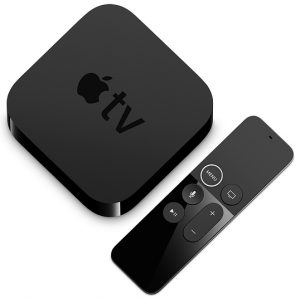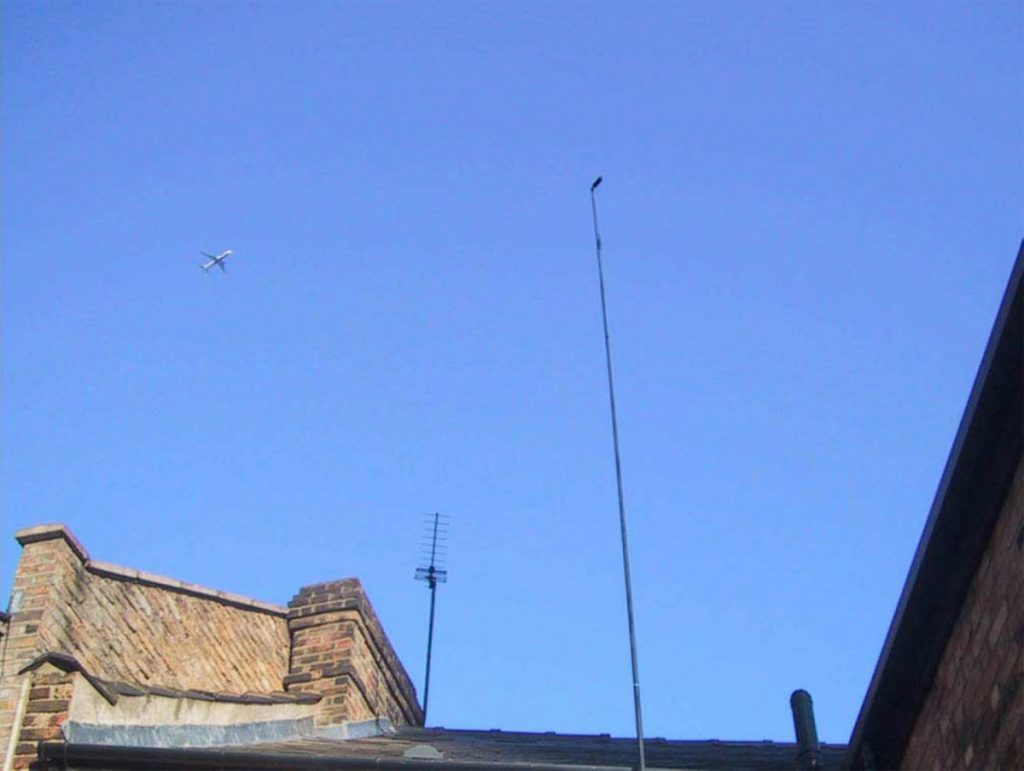by Anuradha Reddy
The Internet of Things (IoT) has become a major force in the way technology enters into and integrates with our domestic lives. As various sources of computation continue to proliferate, data-driven frameworks of the IoT are becoming the dominant means to support everyday interactions – between people, animals, and objects such as kettles, cars, watches and thermostats. Living with the things of the Internet of Things, in this regard, poses an important question as to whether one feels “at home” with a technology that is largely determined by its networked, distributed and hidden aspects. Arguably, these logics are exploited to “care” for our well-being by capturing all sorts of data about our social patterns, rhythms and routines, movements of people, objects and activities across different scales of the domestic. The data, however, are used to produce new kinds of value which more accurately serve companies and governments rather than the actual “users” of the technology. This essay employs the notion of “care” as an analytical provocation to explore how one might begin to feel “at home” with the new “smart” technology.


Smart Home
Today, new services and products of the IoT are designed to not only communicate data between one another but they also collect, analyse and respond to events in the real world: adjusting to complex situations without the need for human intervention, anticipating needs and even acting on people’s behalf. Pushed from the outside, these “smart” objects are rapidly invading our homes, where they are expected to manage our intimate lives in the most efficient manner. An example of such a product is the Apple HomeKit, which acts as a hub that manages personal needs through a standalone device such as Apple TV or the HomePod speaker. This “hub” supports connections to an eco-system of devices such as smartphones, watches, lights, TVs, microwaves, cooktops and fridges, as well as entertainment services like Netflix, as long as all the devices are configured to communicate with one another and perform the tasks assigned by its owners. The name given to such networked interoperabilities between things in a pervasive living set up is the “Smart Home.”
The “Smart Home” is one of the key contributions of IoT in the domestic sector and it strongly derives from traditions in ubiquitous computing and computer science. Despite industry’s expectations of automatizing the Smart Home, such ideals have been strongly contested within the humanities, particularly in interdisciplinary areas such as interaction design, human-computer interaction (HCI), and science and technology studies (STS). For example, HCI scholar, Richard Harper has problematized the goals set for the Smart Home by drawing attention to the complexity and diversity inherent in domestic life.1Harper, R. (Ed.). (2003). Inside the smart home. London ; New York: Springer. This led him to suggest that homes have always been smart. Several other researchers such as Suchman and Wajcman have argued that Smart Home assistants such as Google Home tend to devalue the complexity of the domestic and perpetuate the division of labor by reducing life to a schedule or tasks that “start here and end there”.2Suchman, L. A. (1987). Plans and situated actions: the problem of human-machine communication. Cambridge [Cambridgeshire] ; New York: Cambridge University Press.3Wajcman, J. (2000). Reflections on Gender and Technology Studies:: In What State is the Art? Social Studies of Science, 30(3), doi: 10.1177/030631200030003005 The desire to automate different aspects of living, while meeting unexpected needs of contemporary lifestyles, significantly challenges the fixed notion of a “home,” and calls for further investigation into the domestic and new ways of living.
At the same time, Smart Homes are rapidly changing the way homes are traditionally conceived. As technologies of IoT flourish, new, connected devices in the home trouble old habits and familiar practices by offering new possibilities for interaction – from traditional wall-switches, smartphones, smart buttons, voice-interfaces to gestural interfaces. Despite these possibilities available to users, the complexity of everyday situations – from daydreaming, to spirituality, to domestic abuse – tend to go above and beyond the task-focused or question-and-answer logics for interacting with home-based technology. Humanities researchers in technoscience, Michael and Gaver, for instance, have critiqued this “task-focused” nature of domestic technologies and, instead, adopted the notion of “dwelling” as an alternative way of understanding the home and the role of technology in it.4Michael, M., & Gaver, W. (2009). Home Beyond Home Dwelling With Threshold Devices. Space and Culture, 12(3), 359–370. doi:10.1177/1206331209337076
Dwelling
From this perspective, the question focuses less on smartness and rather on how we engage with the home as if it were a technology and which interactions it affords by us dwelling in it. In their explication of “threshold devices,” Michael and Gaver, following Bruno Latour and Martin Heidegger, challenge the relationship between dwelling and the home by engaging with the interactive qualities of technology that support homely imaginaries and spatialities rather than fulfilling everyday tasks.5Michael, M., & Gaver, W. (2009). Home Beyond Home Dwelling With Threshold Devices. Space and Culture, 12(3), 359–370. doi:10.1177/1206331209337076 The threshold devices, according to the authors, are capable of mediating a “technonatural” world beyond the home, within which the home is situated. For example, the Video Window is a threshold device that allows keeping an eye on the “outside” world in a strange way, and offers the opportunity to reflect on what it means to dwell in technonatural environments.6 Michael, & Gaver, 362. It provides an example of how a networked artefact can expand the spatiality of what one considers a home and stresses the ambiguity of it. Similar to other technologies that mediate a world elsewhere, such as the television, the authors argue that threshold devices disrupt the local “sense of home,” displaced by a domestication that happens elsewhere.7 Morley, D. (2003). What’s ‘home’ got to do with it?: Contradictory Dynamics in the Domestication of Technology and the Dislocation of Domesticity. European Journal of Cultural Studies, 6(4), 435–458. doi: 10.1177/13675494030064001


The threshold devices, in this sense, question simple dichotomies such as inside and outside, here and elsewhere, where the home is ambiguously positioned within the boundaries of being inside and here, while the domestication is taking place elsewhere. Whereas in the case of IoT artefacts, home is neither here nor there, further displacing the domestic to somewhere unknown and invisible: a work of purposeful mediation. This raises the question of how one might dwell with technologies that attempt to create a sense of home when confronted with “othered” relations – languages, objects, knowledge, beliefs and practices that are misplaced, forgotten or sometimes even, purposefully, hidden by the technology.
Dwelling, according to Latimer and Munro, “takes place as and when relations are formed in the here and now”8 Latimer, J., & Munro, R. (2009). Keeping & Dwelling: Relational Extension, the Idea of Home, and Otherness. Space and Culture, 12(3), 317–331. doi: 10.1177/1206331209337565. It could then be argued that domestic IoT artifacts are always in an ongoing process of domestication with human and “othered” relations, relations that “takes place” elsewhere. This sense of dwelling with the IoT understands the home less as a fixed site or a static place in which we live, and rather as a shifting space where we make, keep and break relations with things.
A Sense of Home
We can now acknowledge that a “sense of home” with the IoT refers to the emergence of domestic relations and the maintenance work of keeping those relations with and through the IoT. This way of thinking not only contests but also avoids a homeostatic understanding of the home, particularly in relation to dwelling with IoT artefacts. Furthermore, Latimer and Munro argue that a sense of home is, in a larger sense, about “attachments” where “feelings of longing or belonging are affected by ‘keeping’ the relations that are created or sustained by giving or not giving room to things”9Latimer, & Munro, 289..
In the interest of opening up a space for “feeling at home” with IoT, it is therefore imperative to explore whether and how feelings are taken into account in the way things are designed, assembled and maintained. In that, the significance of feelings has been previously complicated by feminist research and theories about care. For instance, care has been “explored as a significant notion to appreciate the affective and ethico-political dimensions of human-non human relations in technonatural worlds”10Puig de la Bellacasa, M. (2017). Matters of care: speculative ethics in more than human worlds. University of Minnesota Press, Minneapolis. (p.3). At the same time, care has also been theorized by Heidegger as an art of dwelling that constantly relates humans and non-humans to emerging forms of spatialization11Schillmeier, M., & Domènech, M. (2009). Care and the Art of Dwelling: Bodies, Technologies, and Home. Space and Culture, 12(3), 288–291. doi: 10.1177/1206331209337666. Taking these two points together, it can be said that making space for things by keeping relations suggests a practice of caring where “our sense of being in the world and attachment to place arises from engagement with both human and non-human (material and social) aspects of place”12Sims, R., Medd, W., Mort, M., & Twigger-Ross, C. (2009). When a “Home” Becomes a “House”: Care and Caring in the Flood Recovery Process. Space and Culture, 12(3), 303–316.doi: 10.1177/1206331209337077. In this regard, domestic IoT artifacts may be explored from the perspective of care, which could potentially reframe how we understand the role of the artifacts in bringing a sense of home to our daily lives.
Care as Critique
In relation to care and the domestic sphere, Mol, Moser, and Pols suggest that the term “domestic labour” was introduced to differentiate between care-giving as a way of showing love and generosity, such as motherly care, from other forms of care that deal with dirt, sweat, tears and other unpleasantries, mainly in professional work such as household help, nursing or elderly care.13Mol, A., Moser, I., & Pols, J. (Eds.). (2010). Care in practice: on tinkering in clinics, homes and farms (1. Aufl). Bielefeld: Transcript-Verlag. This differentiation allows researchers to make public the work of caring that has previously been hidden or delegated to the realm of the private.14Mol, A., Moser, I., & Pols, J. (Eds.). (2010). Care in practice: on tinkering in clinics, homes and farms (1. Aufl). Bielefeld: Transcript-Verlag. More so, it also helps to expose individuals at the receiving end of care, who are often treated as “patients” or in public terms, “users” of a service or a product. Mol, Moser, and Pols further claim that framing care as a product for sale, such as a vacuum cleaner, would make it hard to see that the work of care is not bought but it is, in fact, done by a person or thing outside the frame of the product. Further, any notion suggesting that care is a warm, affectionate feeling, and a feel-good moralistic attitude can and must be challenged through a thorough inquiry of the work that involves and makes care.15Puig de la Bellacasa.
Putting this into context, technology is seen in direct opposition to care. Whilst technology is attributed by instrumentality, efficiency and effectiveness, care is overflowing and nurturing and that makes it impossible to capture, calculate and deliver as a technology. One can further argue that technology depends on care work, on people adapting the technology to meet a specific situation, while adapting the situation to the technology – an endless process of tinkering that is taken for granted by those who make them.16Mol, Moser, & Pols. (Eds.). This tinkering process is, therefore, crucial for understanding how one manages the forces brought about by the technology to provide and make care.
Internet of Things and Care
In developing an agenda for exploring IoT artifacts from the perspective of care, it is important to discuss how care itself might become an “object of concern.” Drawing upon feminist theory and STS, the concern arises mainly in the way developers and designers overlook the politics in and around the technology and undermine the struggles endured while caring for ourselves (humans) as well as other beings. If the design of domestic IoT technology can be seen as a political act rather than a benevolent activity, we might see that care plays a role in telling the bigger story as well as in highlighting other stories of tinkering and appropriation. From this perspective, care is not positioned to perform yet another kind of rationalism by exposing the neglected acts of tinkering, but it is instead performed as an activity with a commitment to explore what a sense of “feeling at home” means with the technology. In many ways, this entails a double-strategy – one facilitated by an “ethics of caring”17Collins, P. H. (2002). Black Feminist Thought: Knowledge, Consciousness, and the Politics of Empowerment. London ; New York: Routledge., and another driven by a mode of deception to shift the power relations back to care and sustenance, away from the dominant logic of data collection and data sharing pertaining to the IoT18Buchanan, F., & Wendt, S. (2017). Opening doors: Women’s participation in feminist studies about domestic violence. Qualitative Social Work: Research and Practice, 147332501769408. doi: 10.1177/1473325017694081.
A Methodological Playground for Exploring Care in IoT
Following the theoretical associations drawn to “care” through interdisciplinary accounts in anthropology, STS and feminist research, the methodology appropriate to this framing must not be positioned in isolated disciplinary pockets but in something that brings unique sensitivity to the situated aspects of human and technology relations of care. This requires engaging with methods that are able to support the exploration of care in human and more than human ways. On the one hand, disciplines like anthropology and sociology bring the tradition of theorizing about, seemingly, unrelated concepts such as linking technology to care through the contexts of its usage19Mol, Moser, & Pols. (Eds.).. On the other hand, those who argue for “inventive methods,” and the use of simple analytical devices such as configuration, categorization, anecdotes, probes, and experimentation that are able to bring rigor into a critical engaged theory and practice through the acknowledgement of non-human agencies, relationalities and the emergence of new materialities20Lury, C., & Wakeford, N. (Eds.). (2012). Inventive methods: the happening of the social. London ; New York: Routledge..
Drawing from these sets of traditions, Gunn and Donovan, propose a “design anthropology,” which is able to “include the critical use of theory and contextualization, the extension of time horizon to include the past and long-term future to ensure sustainability; and sensitivity to and not least incorporation of values and perspectives of the people [and other beings] whose worlds are affected by design”21Gunn, W., & Donovan, J. (Eds.). (2012). Design and anthropology. Farnham, Surrey ; Burlington, VT: Ashgate.. To a large extent, this kind of framing makes room for supporting inventive methods and practices that have mixed characters from anthropological staging of things that “care”22Michael, M. (2004). On Making Data Social: Heterogeneity in Sociological Practice. Qualitative Research, 4(1), 5–23. doi: 10.1177/1468794104041105, to probing into situations of everyday “care”23Gaver, B., Dunne, T., & Pacenti, E. (1999). Design: Cultural Probes. Interactions, 6(1), 21–29. doi: 10.1145/291224.291235 as well prototyping new experiences of care in an IoT context24Buchenau, M., & Suri, J. F. (2000). Experience prototyping. In Proceedings of the 3rd conference on Designing interactive systems: processes, practices, methods, and techniques (pp. 424–433). ACM. Retrieved from: http://dl.acm.org/citation.cfm?id=347802.